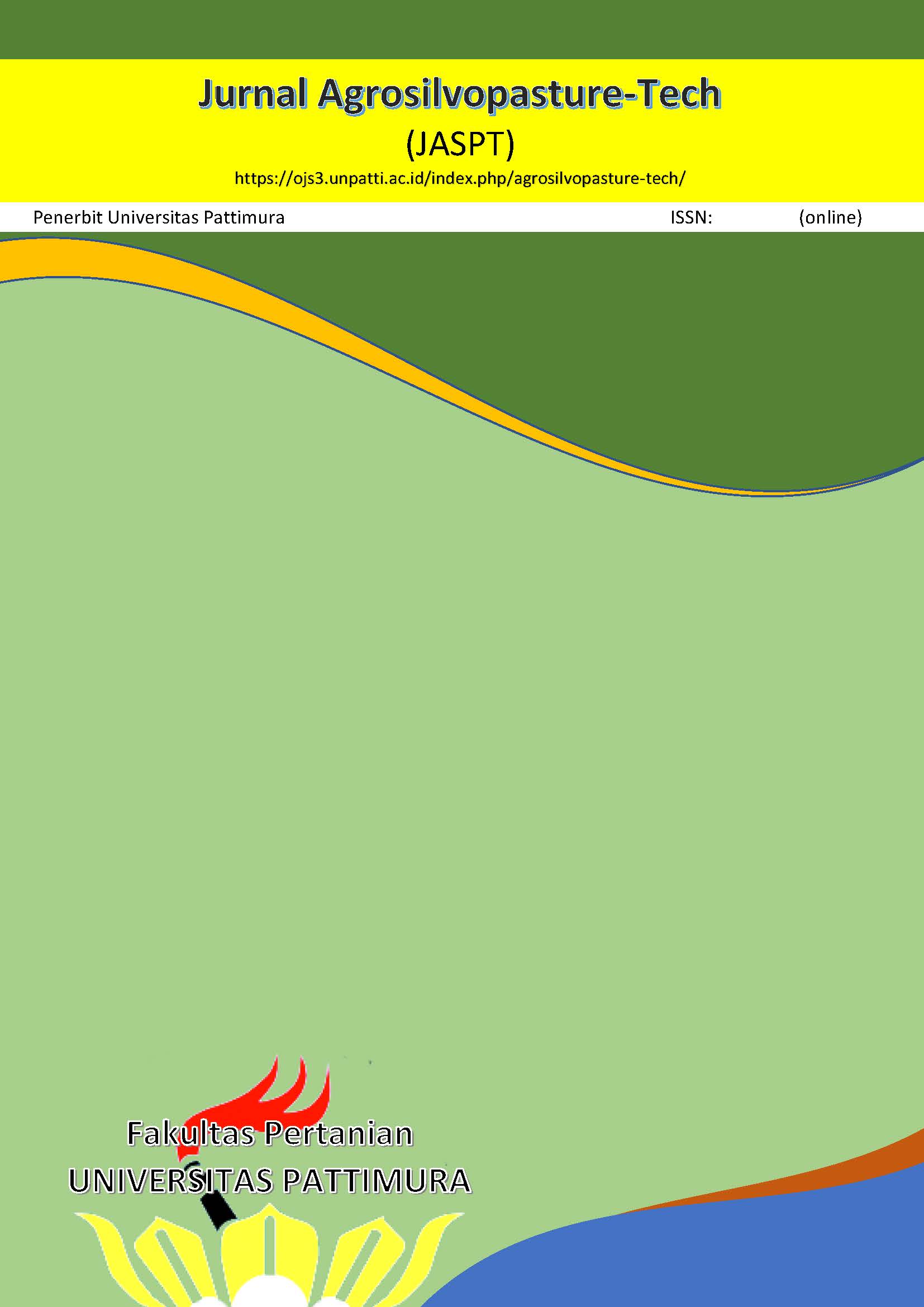Soil Characteristics Under Sago Stands (Metroxylon sp) Under Different Inundation Conditions in Rupaitu Negeri Tulehu Hamlet, Salahutu District, Central Maluku Regency
Abstract
s study aims to identify the characteristics of the soil that develops on sago land with different inundation conditions and determine the type of soil on sago land with different inundation conditions. The method used is survey method. Determination of the observation points of the soil profile at the study site was based on inundation conditions obtained through interviews with sago processing farmers at the study site. Soil characteristics on permanently flooded land are dominated by the color of glei wAhich has undergone a reduction process. On land with periodic inundation conditions that undergo an oxidation-reduction process is dominated by motling colors and in non-flooded conditions no glei or motling colors are found. In conditions of permanent inundation and periodic inundation, no identifying horizon has been found except in non-flooded conditions, a cambic (Bw) identifying horizon has been found. The dominant soil formation factors are climate (rainfall) and topography. Rainfall and topography affect the depth of groundwater and inundation. The soil formation process that occurs is the gleization process in Gleisol soils and the leaching process occurs in Kambisol soils. Differences in soil types due to differences in inundation conditions are not yet clear, but the differences in soil types are clear, namely Gleisol hydrik (Typic hydraquents), Gleisol district (Typic epiaquepts) and Gleisol fluvik (Fluvaquentic epiaquepts) and Cambisol oxic (Typic dsytrudepts).
Downloads
References
Buckman, H.O. & Brady, N.C. (1982). Ilmu Tanah. Bhratara Karya Aksara. Jakarta. 788 hal.
Darmawijaya. (1997). Klasifikasi Tanah. UGM Press: Yogyakarta
Hanafiah, K.A. (2005). Dasar Dasar Ilmu Tanah. PT Raja Grafindo Persada: Jakarta.
Hardjowigeno, S. (2003). Klasifikasi Tanah dan Pedogenesis. Jakarta: Akademika Pressindo. 250 hal.
Jenny, H. (1941). Factor of Soil Formation, A System of Quantitative Pedology. John and Sons. New York. 435pp.
Louhenapessy. 1994. Evaluasi dan Klasifikasi Keseuaian Lahan bagi Sagu (Metroxylon spp). Disertasi. Yogyakarta: Universitas Gadjah Mada.
Louhenapessy, J.E., Luhukay, M., Talakua, S.M., Salampessy, H., & Riry, J. (2010). Sagu Harapan Dan Tantangan. Penerbit Bumi Aksara. Jakarta.
Copyright (c) 2023 The Author(s)

This work is licensed under a Creative Commons Attribution-ShareAlike 4.0 International License.




.png)

